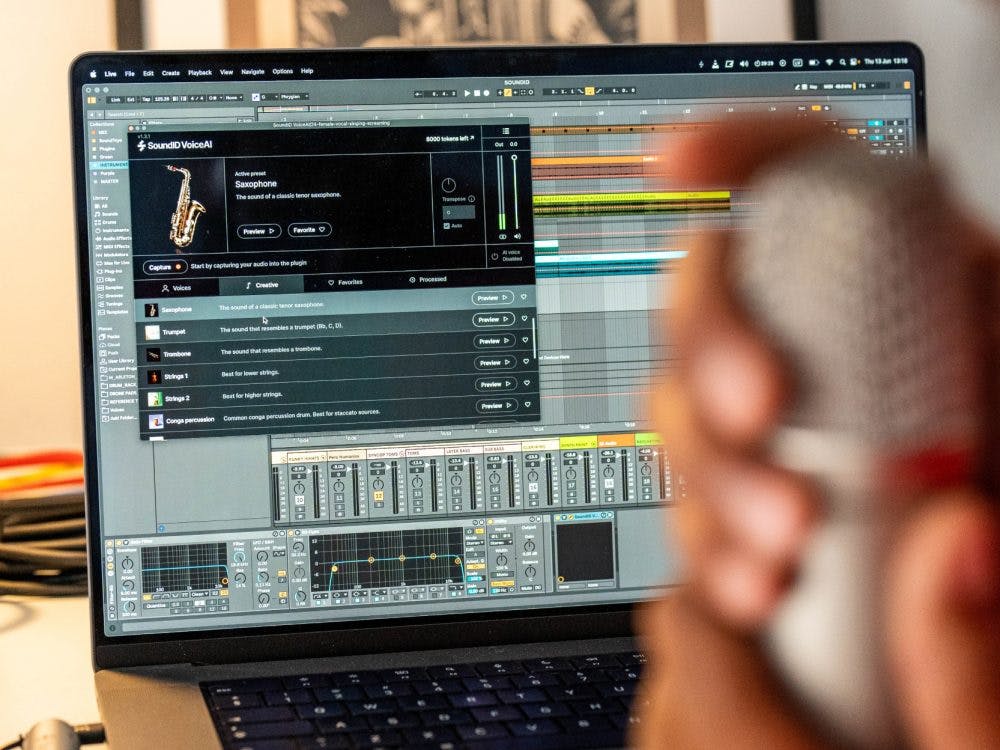Vocal AI and instrument AI revolutionise music prototyping by providing instant access to professional-quality sounds without the need for live performers or expensive studio time. These AI music tools transform simple vocal recordings into polished vocals, backing harmonies, or even instrumental parts, allowing artists to rapidly test musical ideas and complete demo tracks in minutes rather than days.
Why artists need faster prototyping methods
Traditional music production often creates bottlenecks that slow down creativity. You might have a brilliant melody idea at 2 AM, but you can’t call session musicians or book studio time until business hours. This delay can kill the creative momentum that drives great music.
Music prototyping traditionally requires multiple resources: vocalists for different parts, instrumentalists for various sounds, and studio time to capture everything properly. Each element adds time, cost, and scheduling complexity to your creative process.
Speed matters because creativity flows in bursts. When inspiration strikes, you need tools that match your creative pace. The faster you can prototype ideas, the more concepts you can explore, and the better your final compositions become.
What is vocal and instrument AI in music production?
Vocal AI uses machine learning algorithms to transform your voice recordings into different vocal styles, timbres, and even instrument sounds. These tools analyse the pitch, timing, and musical characteristics of your input audio, then apply sophisticated processing to create entirely new sounds.
Instrument AI works similarly but focuses on generating instrumental parts. You can hum a guitar melody, and the AI transforms it into a realistic guitar performance. Some tools even convert beatboxing into full drum arrangements.
These technologies use neural networks trained on thousands of hours of professional recordings. They understand the nuances of different vocal styles and instrumental techniques, allowing them to recreate authentic-sounding performances from simple input recordings.
How does AI speed up the music prototyping process?
AI audio processing eliminates the traditional recording chain entirely. Instead of booking musicians, setting up microphones, and managing multiple recording sessions, you record one vocal take and generate multiple parts instantly.
The speed improvements are dramatic:
- Create backing vocals in seconds rather than hours of recording sessions
- Generate instrumental parts without waiting for musician availability
- Test different vocal styles and timbres instantly
- Build complete demo arrangements from a single voice recording
This acceleration lets you iterate rapidly on musical ideas. You can try ten different vocal arrangements in the time it would traditionally take to record one, leading to better creative decisions and more polished final products.
What are the best AI tools for vocal and instrument prototyping?
The music technology landscape offers several categories of AI prototyping tools. Voice processing plugins lead the market, offering libraries of different vocal characters and styles that you can apply to your recordings.
| Tool Type | Best For | Processing Method |
|---|---|---|
| Voice AI Plugins | Vocal transformation and backing vocals | Local or cloud-based |
| Instrument AI | Converting vocals to instruments | Usually cloud-based |
| Harmony Generators | Creating vocal harmonies | Local processing |
| Style Transfer Tools | Changing vocal characteristics | Mixed processing |
Modern AI voice plugins integrate directly into your digital audio workstation, offering libraries of 50+ different vocal and instrumental presets. These tools provide both unlimited local processing options and cloud-based processing for more intensive transformations.
How do you integrate AI tools into your music workflow?
Successful artist workflow integration starts with choosing the right processing method for your needs. Local processing offers unlimited use but requires sufficient computer resources, while cloud processing provides more power but operates on a pay-per-use model.
Follow these integration steps:
- Install the AI plugin in your preferred DAW
- Record clean, dry vocal takes without reverb or heavy processing
- Apply AI processing to individual tracks rather than copying the same audio
- Use different AI presets for each backing vocal to create natural variation
For best results, record separate takes for each part you want to create. Even if the melody is identical, slight timing and pitch variations between takes create more natural-sounding results when processed through different AI models.
Making AI work for your creative process
Faster music creation through AI tools transforms how you approach music production, but the technology works best when it enhances rather than replaces your creative instincts. Use AI to rapidly prototype ideas, then refine and humanise the results with your artistic vision.
The key to success lies in understanding AI as a creative accelerator. These tools excel at generating raw material quickly, but your musical judgment determines which ideas deserve development and how to shape them into compelling compositions.
Start with simple applications like creating backing vocals or demo instruments, then gradually expand your use as you become comfortable with the technology. The goal isn’t to replace human creativity but to remove technical barriers that slow down your creative process.
We’ve developed SoundID VoiceAI specifically to address these prototyping challenges, offering over 50 voice and instrument presets that integrate seamlessly into professional DAWs while maintaining the highest audio quality standards.
If you’re ready to get started, check out our VoiceAI plugin today.



